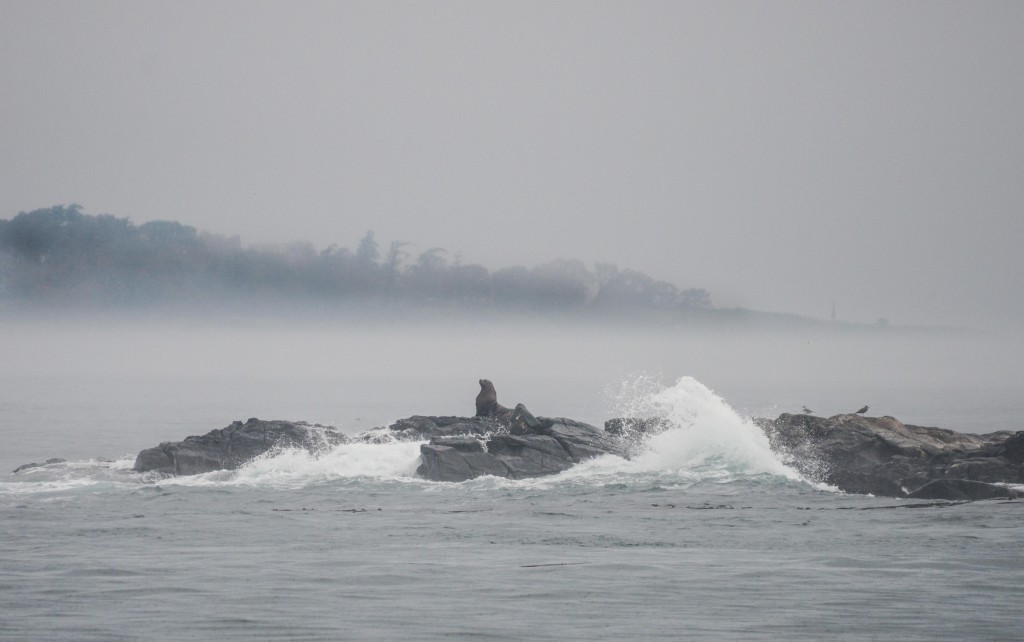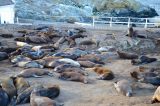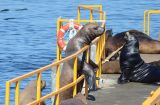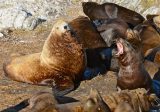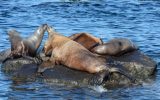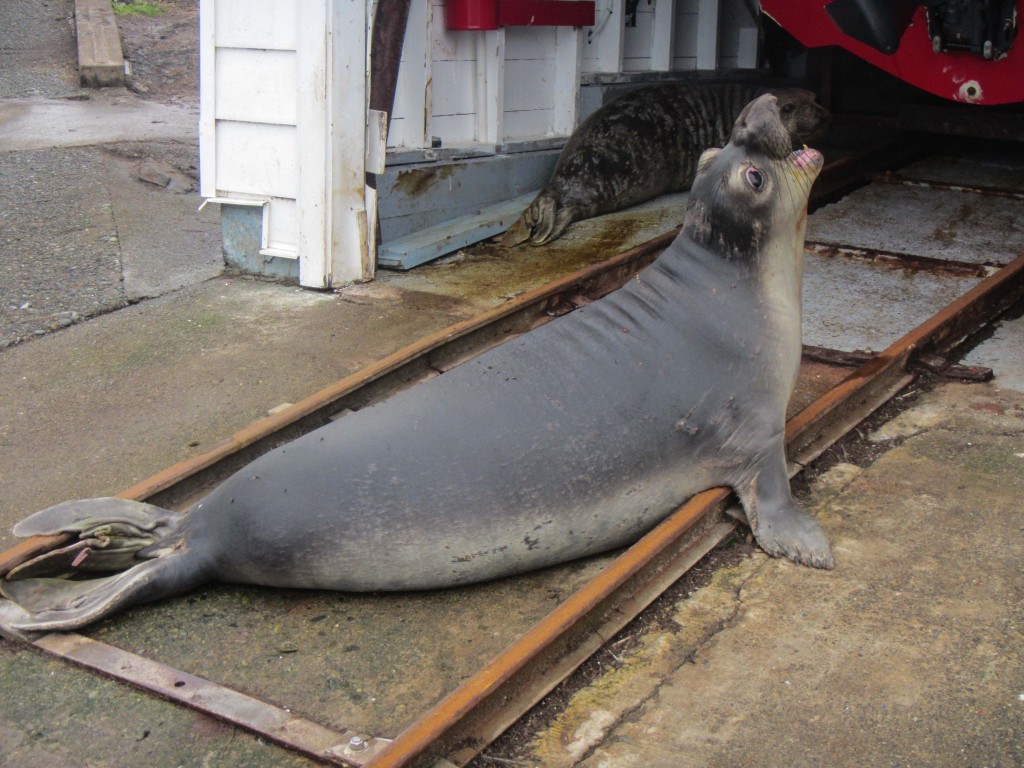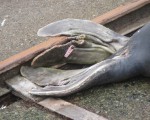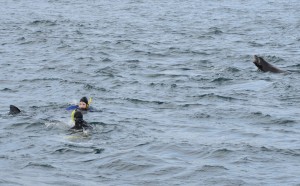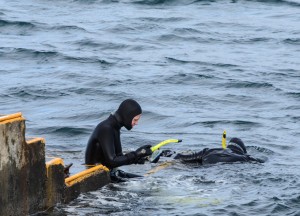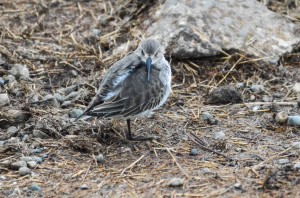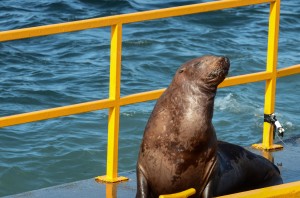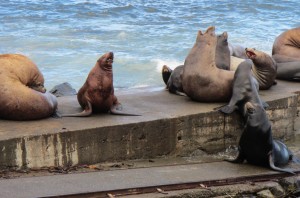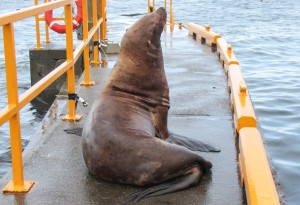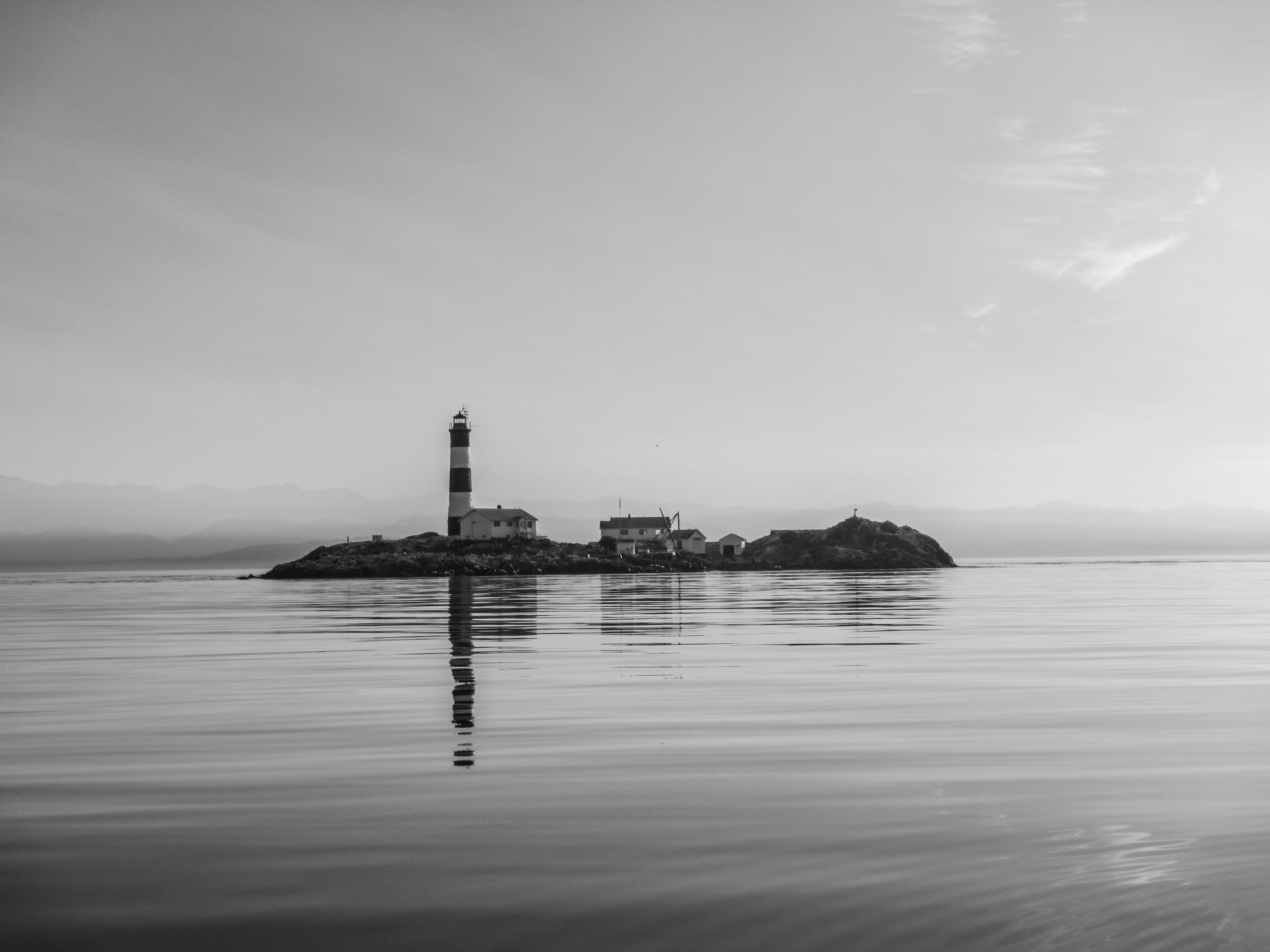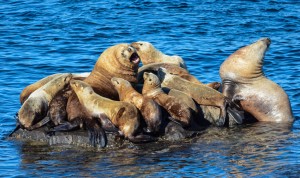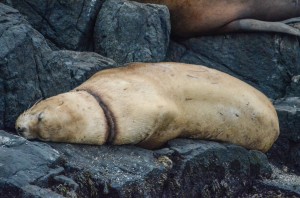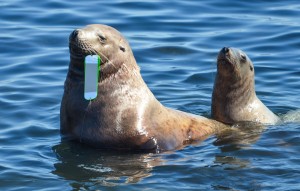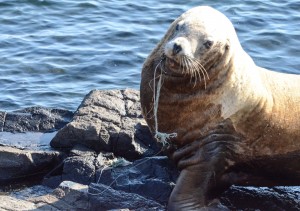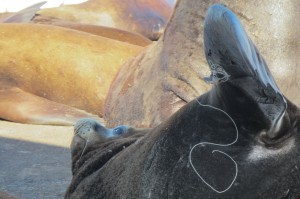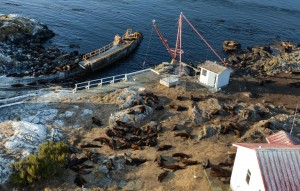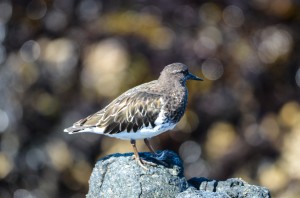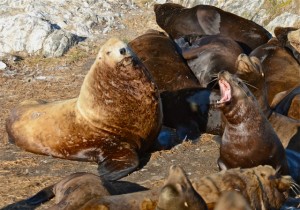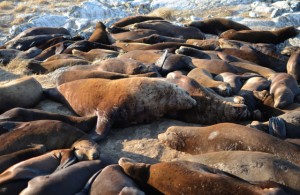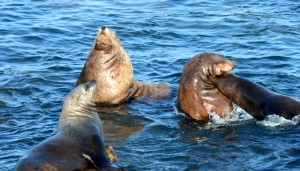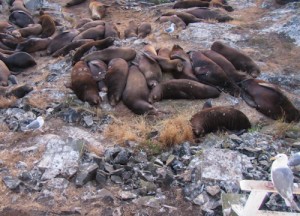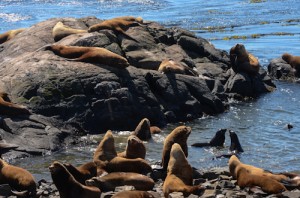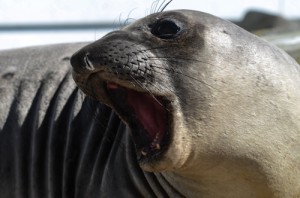Early November finds us at the end of the Sea Lion occupation of Great Race Rock. There are perhaps only 50 or 60 remaining in the Reserve and they have moved back to the smaller offshore islets. And though I shall miss them I admit to feeling some relief that the 7 weeks of the cacophonic onslaught is over! Never would I have imagined that I would have lived so close (almost under) a posse of Steller and California Sea Lions and have the opportunity to learn their ways. But it is also a bit lonely/solitary again; the misty grey days of November, the enveloping fog banks, glassy swells rolling up the Strait… there is something a bit ethereal about the whole experience living on the edge of the world.
A half dozen young Elephant Seals continue to occupy Middle Rock with random forays over here. Yesterday there was a little fellow in the boathouse, and a new individual with a pink tag!
Many visitors have been dropping by including Pearson College Director David Hawley and his advisee group for a weekend, and a visiting group of trustees from a UWC school in Germany. I am puttering away at a few maintenance projects, keeping the energy and weather systems functioning, and cleaning up after the Sea Lions. They have coughed a pink, fishy mucus all over the white walls of the buildings and it dried and adhered in the late September sunshine. A charming souvenir of their stay!
More coming soon….

